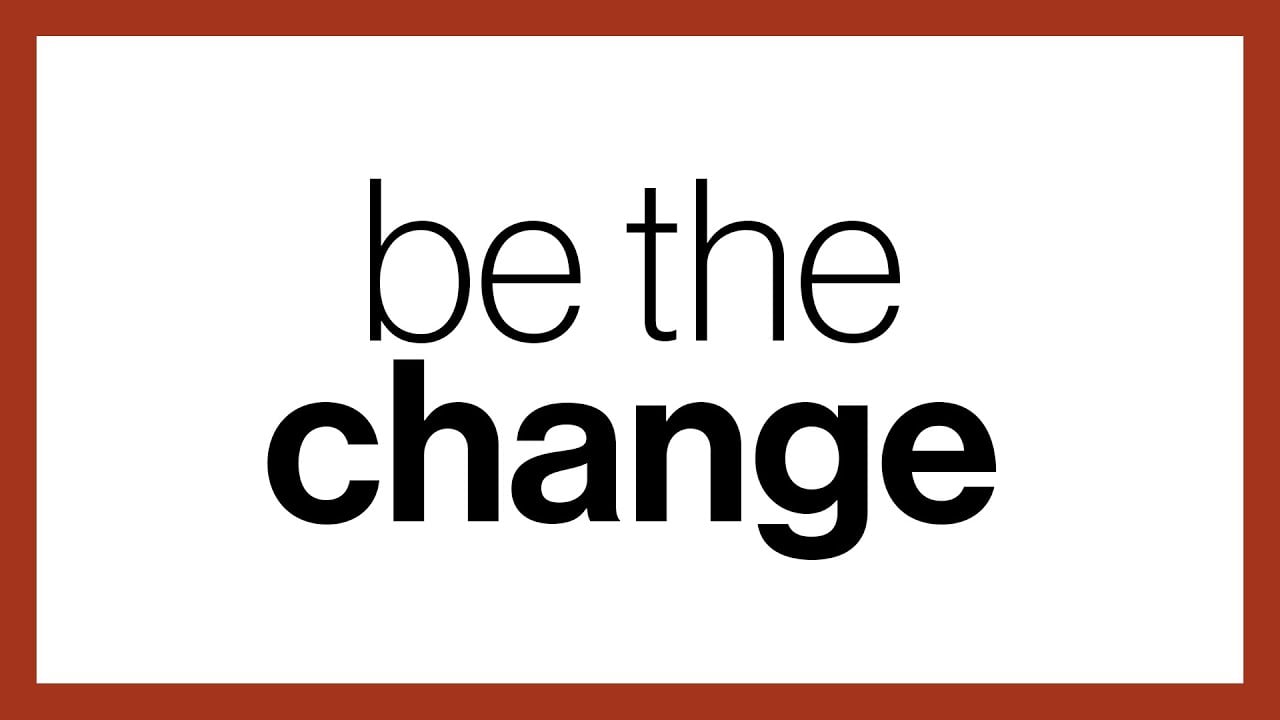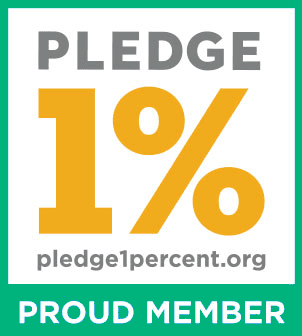9 Best Charities That Support Low-Income Families (Complete 2025 List)
Affiliate Disclosure
Hey fellow impactful ninja ?
You may have noticed that Impactful Ninja is all about providing helpful information to make a positive impact on the world and society. And that we love to link back to where we found all the information for each of our posts.
Most of these links are informational-based for you to check out their primary sources with one click.
But some of these links are so-called "affiliate links" to products that we recommend.
Why do we add these product links?
First and foremost, because we believe that they add value to you. For example, when we wrote a post about the environmental impact of long showers, we came across an EPA recommendation to use WaterSense showerheads. So we linked to where you can find them. Or, for many of our posts, we also link to our favorite books on that topic so that you can get a much more holistic overview than one single blog post could provide.
And when there is an affiliate program for these products, we sign up for it. For example, as Amazon Associates, we earn from qualifying purchases.
What do these affiliate links mean for you?
First, and most importantly, we still only recommend products that we believe add value for you.
When you buy something through one of our affiliate links, we may earn a small commission - but at no additional costs to you.
And when you buy something through a link that is not an affiliate link, we won’t receive any commission but we’ll still be happy to have helped you.
What do these affiliate links mean for us?
When we find products that we believe add value to you and the seller has an affiliate program, we sign up for it.
When you buy something through one of our affiliate links, we may earn a small commission (at no extra costs to you).
And at this point in time, all money is reinvested in sharing the most helpful content with you. This includes all operating costs for running this site and the content creation itself.
What does this mean for me personally?
You may have noticed by the way Impactful Ninja is operated that money is not the driving factor behind it. It is a passion project of mine and I love to share helpful information with you to make a positive impact on the world and society. However, it's a project in that I invest a lot of time and also quite some money.
Eventually, my dream is to one day turn this passion project into my full-time job and provide even more helpful information. But that's still a long time to go.
Stay impactful,
Worldwide, 85% of people live on less than $35 per day. These low-income families live shorter lives, have decreased access to education, and are at a higher risk of mental health problems. Luckily, several charities are working to promote equal access to housing, food, and healthcare. So we had to ask: which are the best charities that support low-income families?
The best charities that support low-income families are World Vision and the Society of St. Vincent de Paul. Others, such as the Salvation Army and Family Promise provide families direct access to food, finances, and education.
Whether you want to support entire impoverished communities, build homes for families, or help children in need, there is a charity for you. Keep reading to learn more about what the best charities that support low-income families are all about, how they work, and what your best way would be to make a contribution.
Here’s What All the Best Charities That Support Low-Income Families Have in Common
The charities on this list were chosen based on services provided, transparency ratings, achievements, and mission.
Each of these charities go above and beyond to help low-income families make ends meet. They all help to ensure that families have access to the services that they need in order to survive and thrive.
Some assist on the individual level while others help by supporting entire underserved communities. Some of these charities operate at the international level whereas others focus their efforts within the United States.
Yet, they all share a common goal: to support and improve the lives of those in poverty.
These Are the 9 Best Charities That Support Low-Income Families in 2025
Below are our favorite charities that support low-income families (you can click on their link to directly jump to their section in this article):
Best Charities That Support Low-Income Families
(At the end of this article we’ll also share our six-step approach on how you can select the best charity to support.)
World Vision: Addressing Poverty by Giving to the Community

🔎
Their transparency & ratings:
Charity Navigator gives World Vision a rating of 4-stars. World Vision also holds the GuideStar platinum seal of transparency.
“We partner with children, families, and their communities to reach their full potential by tackling the causes of poverty and injustice.”
World Vision
⚒️
What they do:
World Vision eases the burden for low-income families by providing them with food, personal hygiene items, clothing, and school supplies. They also provide international finance classes for adults. This includes a savings group and education about microloans, which encourages entrepreneurship in low-income families.
🚀
What they’ve achieved:
To date, World Vision has helped over 12 million people worldwide with their food projects. In 2020, World Vision distributed 178,265 metric tons of food globally. In addition, they helped 1.7 million adults and children with their domestic programs in the United States alone.
✨
Ways to contribute:
You can donate to World Vision directly via their website. You can also contribute by volunteering, knitting, or by directly sponsoring a child.
Society of Vincent de Paul: Helping the Individual

🔎
Their transparency & ratings:
Charity Navigator gives the Society of Vincent de Paul a 3-star rating. Guidestar gives the charity a gold rating for transparency.
“We don’t provide transactions; we create and nurture relationships.”
Society of Vincent de Paul
⚒️
What they do:
The Society of Vincent de Paul provides support to low-income families in numerous ways. Many chapters offer a food pantry, assistance with paying rent and utilities, and provide clothing for families. The society also helps individuals find jobs in trade industries via their Back 2 Work program.
🚀
What they’ve achieved:
Since their founding, the Society of Vincent de Paul has remained dedicated to serving impoverished families. In 2020, the Society completed 1,555,602 total visits to those in need across the United States. They also had nearly 9 million hours of volunteer service. In the same year, they contributed $311,778 towards Covid relief aid in 60 countries.
✨
Ways to contribute:
You can make monetary donations to The Society of Vincent de Paul via their website. They also accept vehicle donations. Alternatively, you can volunteer by finding and contacting the nearest chapter to you.
Salvation Army: International Assistance for Low-Income Families

🔎
Their transparency & ratings:
Guidestar gives the Salvation Army their gold seal of transparency.
“The Salvation Army organizes and funds many initiatives to bring about real change for communities in the most need.“
Salvation Army
⚒️
What they do:
The Salvation Army has largely focused on providing medical services for low-income families with 172 health facilities open world-wide. They also provide access to food pantries and meal delivery, transitional housing for the homeless, and unemployment assistance.
🚀
What they’ve achieved:
The Salvation Army continues to make international impacts with health, providing food, and housing.They provide annual assistance to over 30 million people in the United States alone. For example, in 2020, they served over 224 million meals in the United States. Internationally between 2020 and 2021, they provided health services to over 1.5 million patients.
✨
Ways to contribute:
You can donate directly to the Salvation Army on their website. You can also volunteer, donate goods, and donate vehicles.
National Urban League: Serving the Underserved
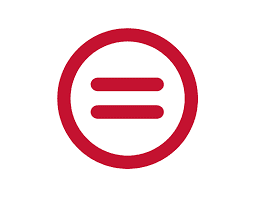
🔎
Their transparency & ratings:
Charity Navigator gives the National Urban League a 3-star rating. Guidestar gives the National Urban League their silver seal of transparency.
“The League promotes economic empowerment through education and job training, housing and community development, workforce development, entrepreneurship, health, and quality of life.”
National Urban League
⚒️
What they do:
The National Urban League helps with foreclosure prevention and comprehensive housing counseling. This includes rental assistance and help with homelessness. The National Urban League bridges gaps in healthcare coverage by helping people who are struggling financially apply for medicaid. They also provide education about chronic conditions.
🚀
What they’ve achieved:
The National Urban League has helped over 100,000 families with foreclosure prevention. 71% of these families were able to save their homes. They have also served 320,000 people through their wellness projects.
✨
Ways to contribute:
You can donate directly to the National Urban League via their website. You can also reach out to volunteer with a local guild.
Feeding America: Feeding Those in Need
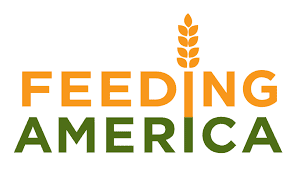
🔎
Their transparency & ratings:
Guidestar gives Feeding America their gold seal of approval for transparency. Charity Navigator also gives them a 4-star rating.
“Our mission is to advance change in America by ensuring equitable access to nutritious food for all in partnership with food banks, policymakers, supporters, and the communities we serve.”
Feeding America
⚒️
What they do:
Feeding America provides food to families and individuals in need. They offer a mobile food pantry for communities without a food bank. They also offer traditional food banks and services specifically for seniors.
🚀
What they’ve achieved:
Feeding America helps an estimated 1 in 7 people in the US, providing food for over 40 million people. In 2021 alone, they served 6.6 billion meals to Americans in need.
✨
Ways to contribute:
You can donate to Feeding America on their website. You can also support the charity by volunteering or by hosting a food drive.
Lift: Empowering Parents to Make Positive Changes
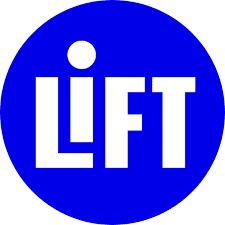
🔎
Their transparency & ratings:
Charity Navigator gives Lift a 3-star rating, and Guidestar gives them the platinum seal of transparency.
“LIFT’s one-on-one coaching program empowers parents to set and achieve goals – such as going back to school, improving credit, eliminating debt, or securing a living wage – that put their families on the path to economic mobility.”
Lift
⚒️
What they do:
Lift offers assistance to low-income parents by helping them identify goals for growth. They then provide them with resources for finances, employment, and education. They also pay parents $1,200 over the course of two years to put towards these goals.
🚀
What they’ve achieved:
Since their founding, Lift has partnered with over 100,000 families in need. Parents who participate in Lift see an average of $63,000 in net benefits and increase their pay by $14,000 per year.
✨
Ways to contribute:
You can donate to Lift on their website. You can also start a fundraiser to involve your family and friends too.
Family Promise: Ending Family Homelessness
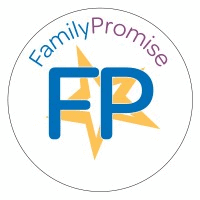
🔎
Their transparency & ratings:
GuideStar gives Family Promise their platinum seal of transparency. Charity Navigator also gives them a 4-star rating.
“Our mission is to help families experiencing homelessness and low-income families achieve sustainable independence through a community-based response.”
Family Promise
⚒️
What they do:
Family Promise works to help low-income families find stable housing. They also focus on helping them keep their homes. Their services include rental and utility assistance, shelters for those who are homeless, and access to clothing closets and food pantries.
🚀
What they’ve achieved:
Family Promise has helped over 1 million people find stable housing since 1988. For example, in 2020 they avoided or shortened over 28,000 episodes of homelessness. Of those who participate in their programs, an average of 81% secure housing within 9 weeks.
✨
Ways to contribute:
You can donate to Family Promise directly on their website. You can also give your time by volunteering with a local affiliate.
Habitat for Humanity: Building Homes and Lives
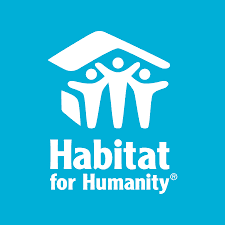
🔎
Their transparency & ratings:
Charity Navigator gives Habitat for Humanity a 3-star rating while Guidestar gives them a gold seal for transparency.
“Habitat homeowners achieve the strength, stability and independence they need to build a better life for themselves and for their families.”
Habitat for Humanity
⚒️
What they do:
Habitat for Humanity provides housing and housing assistance in different ways. They are best known for helping low-income families build affordable houses to live in and for helping them get loans so they can own their own homes. They also help seniors adapt their homes to make them safe to live in as they age.
🚀
What they’ve achieved:
Since their founding, Habitat for Humanity has helped over 39 million people build or improve their homes. In 2021 alone, they helped 4.2 million people build or improve their home and helped an additional 8.5 million people through education and advocacy.
✨
Ways to contribute:
You can donate to Habitat for Humanity via their website. You can also volunteer to help build homes.
Assistance League: Helping Communities
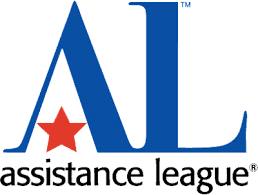
🔎
Their transparency & ratings:
GuideStar gives the Assistance League the platinum seal for transparency. Charity Navigator scores them 100 out of 100 for finance & accountability.
“Each Assistance League chapter exists to serve the unique needs and challenges of their community.”
Assistance League
⚒️
What they do:
The Assistance League provides community-based services for low-income families including food pantries, healthcare, and education programs. They also provide school supplies and clothes to children.
🚀
What they’ve achieved:
The Assistance League continues to impact communities with over 300,000 students helped by their school supply drive annually. Between 2018 and 2019, they helped 1.5 million people and logged 3 million volunteer hours.
✨
Ways to contribute:
You can donate to the Assistance League on their website. You can also volunteer or shop at their thrift stores.
How Can You Select the Best Charities to Support?
The charities on the list are, we deem, the best charities that support low-income families. However, you may have a particular charity you want to support. Let’s look at what you can do to ensure your contribution has the most significant impact.
- Check out the charity website. Charities that are worthy of your donations are transparent in their mission and their figures. Familiarize yourself with their history, mission, and values. Their website usually is the best place to start.
- Identify the charity’s mission. Without a goal, the charity is likely to fail. If the charity’s mission isn’t clear, it’s probably worth looking for a charity that does have a clear mission.
- Check if the charity has measurable goals. An effective charity has clear goals. You want to know your donation will help the charity reach its goals. But if it doesn’t have targets, it’s likely to fail or squander your gift. The charity should be able to account for its spending and supply evidence of the work they do.
- Assess the successes or goals the charity has achieved. You wouldn’t invest in a business if it kept missing its targets. In the same way, charities are like this too. If no one is assessing a charity’s progress in reaching its targets, the chances are they’re not making a substantial positive change.
- Check the charity’s financials and stats. Trustworthy organizations will publish financial statements and reports each year. Some might be exempt from having to do so, but they should be able to provide them to public members who are interested in donating.
- Locate sources who work with or benefit from the charity. Word of mouth and first-hand experience of a charity’s work lets you know the charity’s quality. If you’re able to do so, check out the charity for yourself or speak to someone familiar with it. This way, your donation will go to the right place.
How Can You Best Support These Charities?
After you’ve made your decision, it’s time for you to decide on how you’d like to help the charities you’ve chosen. Check how you can help – each charity runs specific programs that have unique aims. Find out what the aim of such programs is and whether they are right for you.
Here are a few ways you can help your chosen charity:
- Donate money. You can find donation pages on the website of most charities. Your donation can be a one-time payment, or you can set it to be deducted regularly at different intervals. You can mostly pay via credit card, but some charities also take PayPal or Bitcoin payments.
- Buy their official merchandise. The charities can also raise money by selling merchandise. So, you can support them by buying the mugs, shirts, caps, pens, pencils, and any other such items they may be selling. Ideally, you should buy as much as you can to share and spread the word about the charity’s activities.
- Engage in volunteer work. As you’ve seen from our descriptions above, some charities engage in a lot of local and grassroots programs. You can help by taking on and organizing the program in your local area.
- Help their fundraising efforts. You can spread the word about the charity in your workplace, school, church, etc., and hold creative fundraising drives on social media or offline within your small circles.
- Share their stories. Most charities have compelling stories that you can share with your audience to attract more people to the cause.
Final Thoughts
Now it is up to you to select the charity that resonates most with you. And whichever charity you end up choosing and contributing to, we are sure that they will immensely appreciate your support. Hopefully, the information within this article has made this selection process a bit easier for you to support charities dedicated to supporting low-income families – based on the causes that matter most to you.
Stay impactful,

PS: Finally, I want to leave you with a thought-provoking TED talk from Dan Pallotta, a leading philanthropic activist and fundraiser, about what is wrong with the way we think about charities – and what we can do about it:
Sources
- AAFP: Poverty and Health
- World Vision: Home page
- World Vision: About Us
- World Vision: Our Work
- Charity Navigator: World Vision
- Guidestar: World Vision
- World Vision: Poverty in America
- World Vision: Economic Empowerment
- World Vision: Global Poverty
- World Vision: Hunger and Food
- World Vision: Donate Now
- World Vision: Volunteering
- World Vision: Knit For Kids
- World Vision: Sponsor A Child
- Society of Vincent de Paul: Home page
- Society of Vincent de Paul: About Us
- Charity Navigator: Society of Vincent de Paul
- Guidestar: Society of Vincent de Paul
- Society of Vincent de Paul: Our Services
- Society of Vincent de Paul: Housing
- Society of Vincent de Paul: Back2Work
- Society of Vincent de Paul: Annual Report
- Society of Vincent de Paul: CIAD Annual Report
- Society of Vincent de Paul: Donate
- Society of Vincent de Paul: Vehicle Donations
- Society of Vincent de Paul: Volunteering
- Salvation Army: Home Page
- Guidestar: Salvation Army
- Salvation Army: International Health Services
- Salvation Army: Food Pantries
- Salvation Army: Transitional Housing
- Salvation Army: Job Training
- Salvation Army: Perceptions of Poverty
- Salvation Army: Statistics
- Salvation Army: Annual Report
- Salvation Army: Donate
- Salvation Army: Volunteer
- Salvation Army: Donate Goods
- Salvation Army: Donate Vehicles
- National Urban League: Home page
- National Urban League: About
- Charity Navigator: National Urban League
- Guidestar: National Urban League
- National Urban League: Foreclosure Prevention
- National Urban League: Comprehensive Housing Counseling
- National Urban League: Project Wellness
- National Urban League: Donate
- National Urban League: Volunteer
- Feeding America: Home Page
- Feeding America: History
- Guidestar: Feeding America
- Charity Navigator: Feeding America
- Feeding America: Mobile Pantry
- Feeding America: Local Food Banks
- Feeding America: Senior Food Programs
- Feeding America: Why Donate
- Feeding America: 2021 Annual Report
- Feeding America: Donate
- Feeding America: Volunteer
- Feeding America: Food Drives
- Lift: Home Page
- Lift: Our Team
- Charity Navigator: Lift
- GuideStar: Lift
- Lift: Impact
- Lift: Goals
- Lift: Donate
- Lift: Fundraiser
- Family Promise: Home Page
- Family Promise: What We Do
- GuideStar: Family Promise
- Charity Navigator: Family Promise
- Family Promise: Prevention
- Family Promise: Emergency Housing
- Family Promise: Stabilization
- Family Promise: Purpose
- Family Promise: Behind the Numbers
- Family Promise: 2020 Impact Report
- Family Promise: Donate
- Family Promise: Volunteer
- Habitat for Humanity: Home Page
- Habitat for Humanity: About
- Charity Navigator: Habitat for Humanity
- GuideStar: Habitat for Humanity
- Habitat for Humanity: Home Construction
- Habitat for Humanity: Aging in Place
- Habitat for Humanity: Annual Reports
- Habitat for Humanity: Donate
- Habitat for Humanity: Volunteer
- Assistance League: Home Page
- Assistance League: About
- GuideStar: Assistance League
- Charity Navigator: Assistance League
- Assistance League: Food Programs
- Assistance League: Health Programs
- Assistance League: Education Programs
- Assistance League: Operation School Bell
- Assistance League: Community Impact
- Assistance League: Annual Report
- Assistance League: Donate
- Assistance League: Volunteer
- Assistance League: Shop







